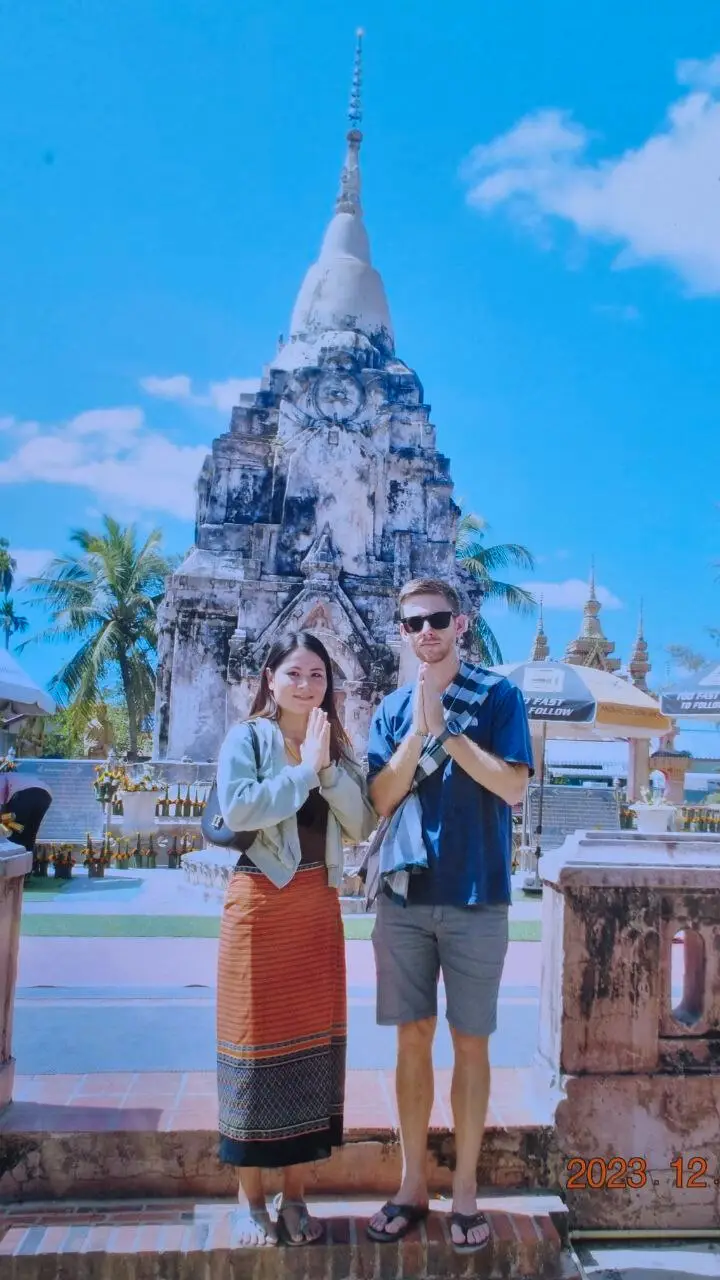
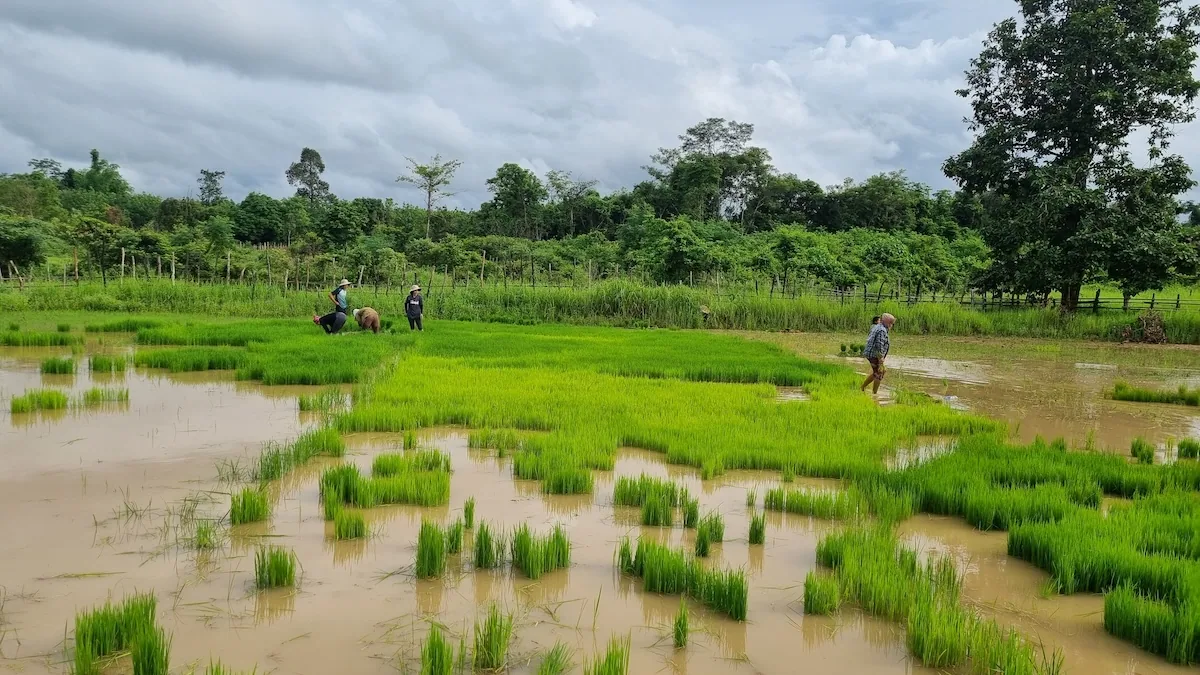
To straight away answer the question of this article about when to visit Laos, I would say that the best three months of the year to visit Laos are (late) October and November, followed by December as the second best month to visit. But why? And is it not possible to travel to Laos during the other months of the year? In this article we will break it down month by month and what to expect from each month of the year when planning a trip to Laos covering Weather conditions, Regions of Laos & Festivals during different months of the year.
Laos has a tropical monsoon climate, meaning it experiences distinct wet and dry periods rather than four traditional seasons. The country is generally warm and humid year-round, with temperatures influenced by altitude and seasonal weather patterns. So the best time to visit Laos depends on the season.
In general the climate in Laos can be divided in 2 main seasons: Dry Season & Wet / Rainy Season. But there is also the Cold Season, which technically falls into the Dry season and sometimes isn’t seen as a distinct season. And there is also the infamous Burning Season, which falls into the Dry/Hot Season. The burning season is mostly relevant for the Northern Region of Laos and is not a distinct season weather-wise. The Cold season definitely needs to be mentioned when planning a trip to Laos because in some parts in can get quite cold at night, therefore travelers have to know what to pack. Many people make the mistake to think only of Laos being super hot and humid all year round – but that’s not always the case. Especially far up north it can be as low as 10 Degrees Celsius at night.
So to clarify:
Climatologically, Laos has 2 seasons (dry and wet).
From a traveler’s perspective, it makes sense to speak of 3 seasons:
Cool/Dry Season (Nov–Feb)
Hot/Dry Season + Burning Season up North (Mar–Apr)
Rainy Season (May–Oct)
The months from November to March/April in are some of the best to visit Laos as mentioned earlier. This period is marked by clear skies, minimal rainfall and increasing temperatures as the months progress. By late October/early November rainfall is unlikely, but can happen. Unlike the wet season, which can bring heavy monsoon rains, the dry season offers stable travel conditions, making it easier to explore the country’s landscapes, cultural sites and remote villages.
This season is shaped by two distinct phases: the cool dry season (roughly November to February) and the hot dry season (March to April). During the early dry months, travelers can expect mild temperatures, low humidity, and clear views — ideal for trekking, sightseeing, and river cruising. As the season progresses into March and April, temperatures rise significantly, particularly in central and southern Laos, with some regions experiencing heatwaves above 40°C.
From November until February, Laos enjoys pleasant daytime temperatures (20–30°C, depending on the region) and cooler nights, especially in higher-altitude regions like Luang Prabang or Phongsaly, where it can drop below 10°C at night. This is an ideal time for outdoor activities such as trekking, cycling, river cruises and temple visits. The countryside is lush and green from the recent rains and major festivals like Loy Krathong and That Luang Festival often fall in this period.
Especially the transition time from late October to late November marks a great time window to plan a trip to Laos. We did a big 3-weeks Northern Laos roadtrip in 2024 from end of october to mid november. We drove our own car all the way from up North: Savannakhet – Thakek – Paksan – Vientiane – Vang Vieng – Luang Prabang – Nong Khiaw – Muang Hiam – Phongsavan (Xieng Khouang). During that time of the year road conditions were absolutely perfect – well talking about the weather and not all the potholes, but that’s a different topic.
Recommendation from someone living in Laos: If you can, visit somewhere in between end of October – end of November!
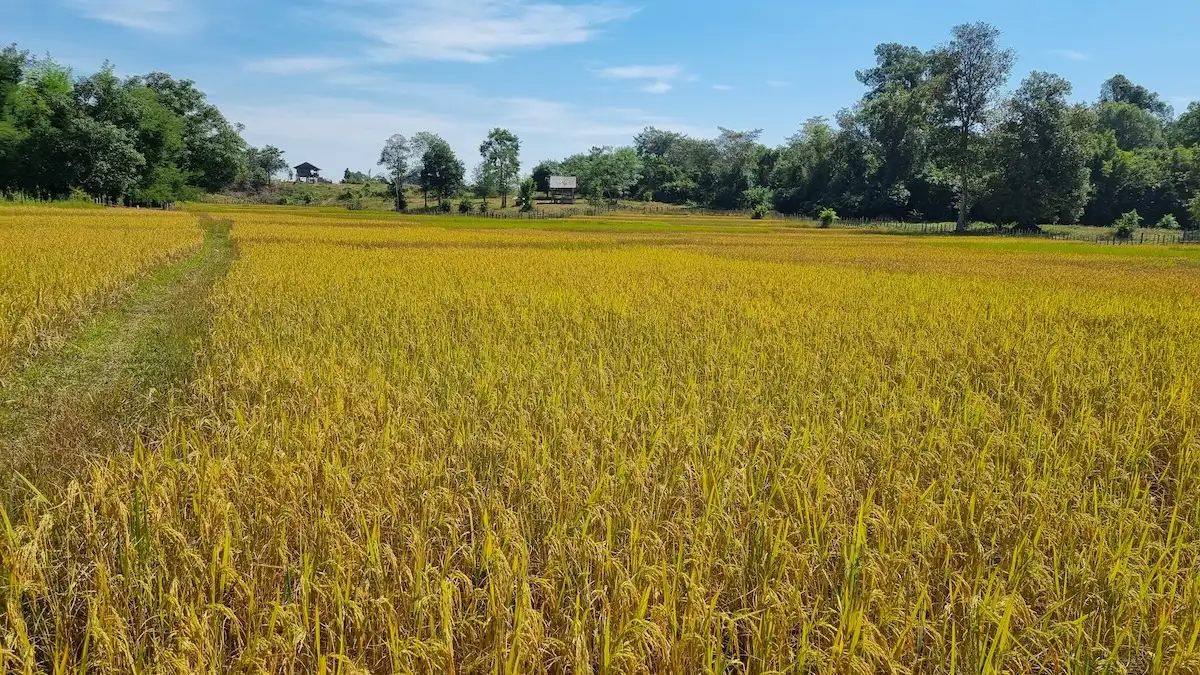
By March, temperatures begin to rise sharply, especially in lowland areas like Vientiane, Pakse and Savannakhet. April is often the hottest month of the year, with daytime temperatures sometimes reaching over 40°C. While still dry and sunny, travel during this time can be challenging for those sensitive to heat. However, the Lao New Year (Pi Mai) in mid-April is a colorful and water-soaked celebration that draws both locals and visitors. The water splashing during Lao New Year (Songkran), is a nice welcome during the hottest month April.
The hot dry season also marks the final stage of Laos’ dry season. You will have absolutely dry conditions, which means that the landscape is not very stunning. All fields are harvested, roads are dusty and locals planning their day around the heat, which makes this time of the year not the best time to visit Laos.
Temperatures regularly exceed 35–40°C
Nights remain warm, with minimal relief from the daytime heat.
Rain is rare, and skies are usually sunny, though haze becomes more common due to burning.
A significant drawback during this time is the “burning season” — from late February to mid-April, when farmers across Laos and neighboring countries burn crop residue to prepare for new planting season. This results in smoky air, reduced visibility and potential health issues, especially in northern Laos (e.g., Luang Prabang, Oudomxay, Muang Ngoi). The start and end of the burning season is not always exactly at the same time, but will usually reach it’s peak somewhere in march to mid april. As the north has plenty of mountain ranges, the smoke can not escape. Farmers in neighboring countries doing the same, which makes it worse in the whole region (Northern Thailand, e.g. Chiang Mai, Myanmar).
Travelers with asthma or respiratory conditions should monitor air quality and possibly avoid travel to northern regions during this period. Cities like Savannakhet, Thakek and Pakse are usually less affected, though haze can still drift. If you plan to visit Laos during that season, the recommendation is, to focus on central and southern regions of the country. The Bolaven Plateau Loop and Thakhek Loop can still be done during burning season, just don’t expect picture perfect scenery due to the dry weather. But road conditions will be dry as well, which makes it a good time for a motorbike tour.
Websites for monitoring air quality:
The rainy season, also known as the green season, typically runs from mid-end May to October in Laos. This period is marked by tropical monsoon rains, high humidity and lush, revitalized landscapes. While many travelers instinctively avoid this season, it can be a surprisingly rewarding time to visit — if you’re prepared.
The start and end of the rainy season don’t follow an exact schedule and can vary slightly from year to year. Rain may begin as early as late April or hold off until mid-end May, depending on regional weather patterns. Similarly, rains can taper off in September, though in some years they linger into early November.
The raining season also marks the beginning of the rice cultivation in Laos. Therefore a lot of rainfall is needed. In 2024 our family in Savannakhet started to plant their beloved sticky rice beginning of July, which is quite late. While this year at the time of writing this article (end of may 2025), rain has started early and follows a more usual pattern again.
Keep in mind that during raining seasons, more mosquitoes can be around. Dengue Fever is present in whole of Southeast Asia, therefore make sure to always apply mosquito repellent when venturing out. Malaria is almost completely extinct in Laos, but in some southern provinces a small risk still exists, only in very remote areas though. Taking Malaria Prophylaxis is not really necesseary when visiting Laos, especially because those pills can have very bad side effects (no medical advice, do your own research). After living in Laos for many years and spending lots of time in some of the affected areas, I have never heard of a single case of Malaria. Apply mosquito repellent – Dengue Fever is not fun either!
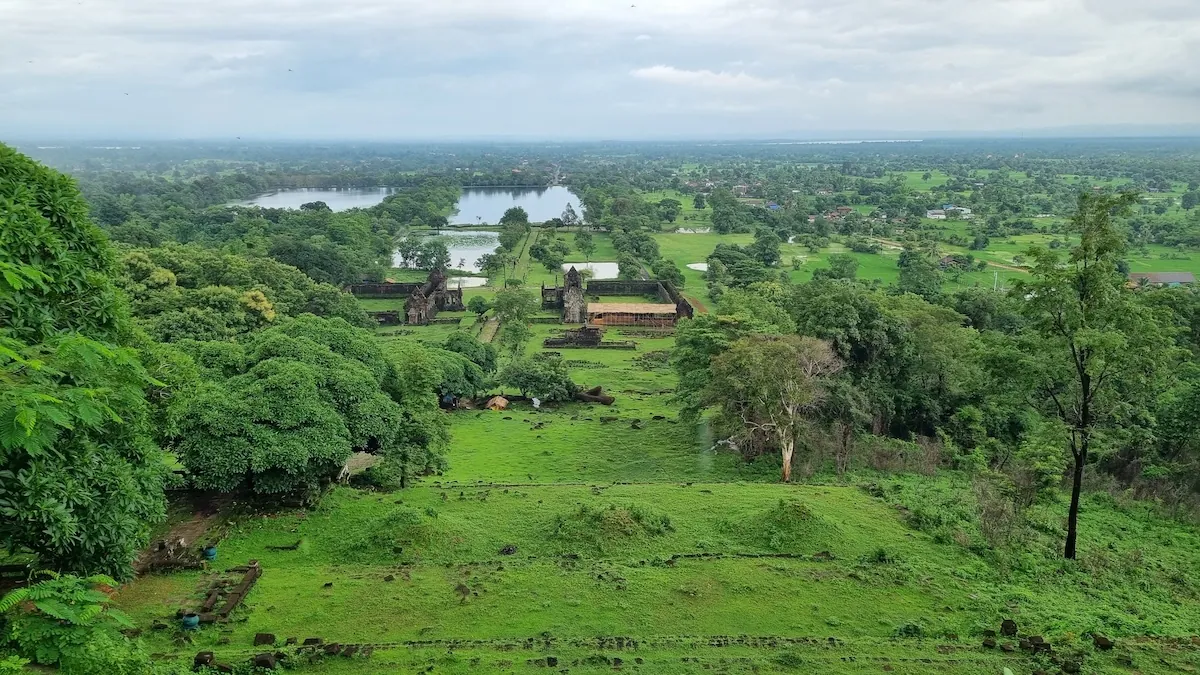
Someone living in Laos would say “Hell Yeah!” Because it marks the end of the heat wave and is a relieve for expats and locals as well. For me personally the second best time of the year to visit. As the rain nourishes the land, rice paddies glow emerald, waterfalls swell, and forests become alive with tropical flora. For nature lovers, photographers, and off-the-beaten-path travelers, this is one of the most visually stunning times to explore Laos.
What to expect when visiting Laos during the Green Season?
Rain often falls in short, heavy bursts, typically in the late afternoon, evening or at night. Its unlikely that it rains all day.
Mornings are usually dry and sunny, making sightseeing possible if planned wisely.
Some rural roads become muddy or impassable, especially in remote areas.
Fewer tourists mean lower prices, quieter attractions and more authentic interactions.
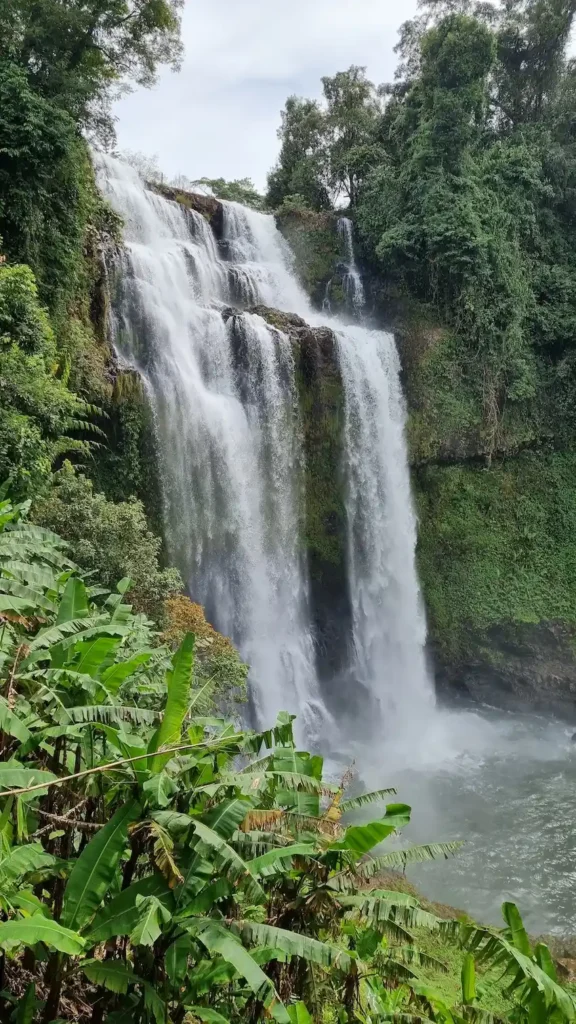
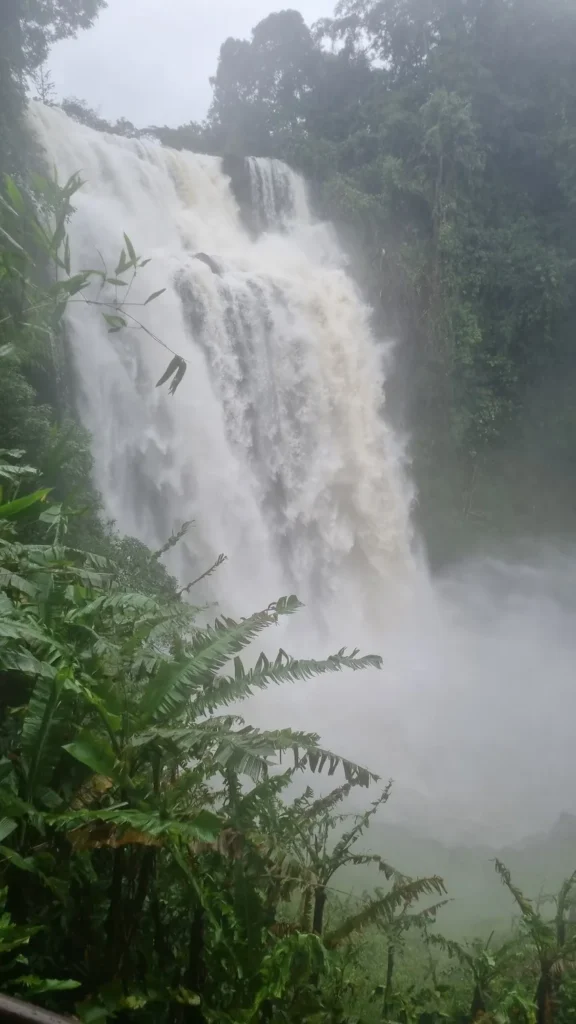
(Scroll Chart to the right on Mobile Devices to see full Chart)
| Month | Avg. Temp (°C) | Weather | Season | Travel Tips |
|---|---|---|---|---|
| January | 14–28 | Cool & Dry | Cool Dry | Perfect for trekking and temple visits |
| February | 16–30 | Mild & Sunny | Dry | Comfortable weather for all activities |
| March | 18–35 | Hot & Dry | Hot Dry | Start early to avoid midday heat |
| April | 21–36 | Very Hot | Hot Dry / Burning | Pi Mai festival and peak heat – stay cool |
| May | 23–34 | Hot with First Rains | Early Rainy | Hot & humid, with occasional showers |
| June | 24–32 | Warm & Wet | Rainy | Lush landscapes, afternoon showers |
| July | 24–31 | Humid & Rainy | Rainy | Plan activities around rain patterns |
| August | 24–30 | Wettest Month | Rainy | Waterfalls full, fewer tourists |
| September | 23–31 | Still Rainy | Late Rainy | Green countryside, fewer crowds |
| October | 21–31 | Drying Up | Transition | Ideal shoulder season, great visibility |
| November | 18–29 | Dry & Comfortable | Dry | Clear skies, perfect for river trips |
| December | 14–28 | Cool & Clear | Cool Dry | High season – book transport & stays early |
Although Laos has just two primary seasons — dry and rainy — the weather can feel very different depending on which part of the country you’re in. Laos stretches over 1,000 kilometers from north to south and features a diverse mix of mountains, plateaus, and river valleys, creating distinct regional climate patterns. Temperatures during cold season the Northern Laos can even reach single-digits, especially at night – so be prepared.
Northern Laos is characterized by its mountainous terrain, leading to cooler temperatures, especially during the cold dry season. From November to February, daytime temperatures are pleasant, but nights can be chilly, sometimes dropping below 10 °C at night. This period is ideal for trekking and exploring cultural sites.
However, from March to April, the region experiences the “burning season,” where slash-and-burn agriculture causes significant air pollution and haze, adversely affecting air quality and visibility. Travelers sensitive to smoke or with respiratory issues might consider alternative destinations during this time.
Central Laos, encompassing the capital Vientiane and popular destinations like Vang Vieng, offers a more moderate climate. The dry season (November to February) presents warm days and cooler nights, making it suitable for various outdoor activities. From March to May, temperatures rise, often exceeding 35 °C. The rainy season spans from May to September/October, with July and August receiving the heaviest rainfall, which can impact travel plans. But as always: Most stunning nature and green rice fields everywhere.
Southern Laos is generally warmer and more humid throughout the year. The dry season (November to April) is hot, with temperatures frequently surpassing 35 °C. The rainy season (May to October) brings substantial rainfall, especially in the Bolaven Plateau, which receives up to 3,700 mm annually. Despite the rain, this period transforms the landscape into lush greenery, and waterfalls are at their most impressive. But in some waterfalls it might not be possible to swim during raining season because of the excessive amount of water.
Unlike the north, the southern regions are less affected by the burning season, making them a viable alternative during March and April when northern air quality deteriorates.
🌤️ Cool Dry Season (Nov–Feb):
🟢 Best for: Trekking, photography, temple hopping, motorbike loops, river cruises, basically any activity
📍 Where to go: Anywhere! North, Central, or South — all regions are great
✅ Why: Comfortable temperatures, clear skies, vibrant festivals, best road/travel conditions
⚠️ What to pack: Light jacket, sweater, long pants (especially in the north)
🔥 Hot Dry + Burning Season (Mar–Apr):
🟢 Best for: Lao New Year (Pi Mai), motorbike road trips in central/south Laos
📍 Where to avoid: Northern Laos due to smoke and haze (Luang Prabang, Muang Ngoi)
📍 Where to go instead: Central and Southern Laos (Savannakhet, Thakhek, Bolaven Plateau, 4,000 Islands)
⚠️ What to expect: Intense heat (35–40 °C), dusty landscapes, air pollution in the north
✅ Tip: Book accommodation with A/C, avoid strenuous activities at midday
🌧️ Rainy / Green Season (May–Oct):
🟢 Best for: Lush landscapes, lower prices, fewer tourists, waterfalls in full power
📍 Where to go: Any region, but muddy & wet conditions, slower pace of traveling, plan more time
⚠️ What to expect: Afternoon/evening or night showers, muddy roads in remote areas, more mosquito activity
✅ What’s great: Stunning green rice fields, dramatic skies
📍 Avoid: Remote trekking routes unless you’re prepared for wet, slippery conditions
⚠️ What to pack: Umbrella & Raining Jacket
Laos has a tropical monsoon climate with two main seasons—dry and rainy—but travelers often distinguish a third: the cool dry season from November to February, which is widely considered the best time to visit. During this period, the weather is mild and dry, ideal for trekking, sightseeing, and cultural festivals. From March to April, Laos enters its hot dry season, with intense heat and, in the north, the burning season causing haze and poor air quality—making central and southern Laos better alternatives. The rainy or “green” season from May to October brings lush landscapes, full waterfalls, and lower prices, with short daily showers but generally good travel conditions if planned right. Overall, late October to early December offers the most balanced and beautiful experience across all regions, but Laos can be visited all-year-round with taking some things into consideration and plan accordingly. So there is not only one best time to visit Laos.